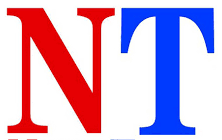
Morocco’s recent acquisitions of Israeli and Turkish weapon systems bear a striking resemblance to Azerbaijan’s in the years leading up to the Second Nagorno-Karabakh War between it and Armenia in late 2020. The North African country may hope these weapons could enable it to similarly prevail in any potential confrontation with Algeria over the disputed Western Sahara region.
The latest clashes over Nagorno-Karabakh, an ethnic Armenian-populated enclave inside Azerbaijan, transpired on Sept. 19-20. While brief, they once again demonstrated how Azerbaijan uses high-tech Israeli-supplied weaponry to its advantage.
The distinct sound of Israeli Harop loitering munitions (single-use, explosive drones) was heard over Nagorno-Karabakh’s capital, Stepanakert. A video posted on social media also purportedly shows Azerbaijan firing Israeli LORA quasi-ballistic missiles.
In the September-November 2020 Second Nagorno-Karabakh war, when Baku successfully captured significant swathes of the enclave, the Azerbaijani armed forces used such systems to win a decisive victory. Azerbaijani Harop loitering munitions destroyed Armenian S-300 air defense missiles inside Armenia. An Azerbaijani Israeli-built Barak 8 missile shot down an Armenian Russian-built Iskander short-range ballistic missile. A LORA missile leveled a bridge. And Turkish-supplied Bayraktar TB2 armed drones devastated Armenian ground forces.
Armenian T-72 being tracked by Turkish-built Azerbaijani Bayraktar TB2 drone moments before its … [+] destruction. (Anadolu Agency via Getty Images
Anadolu Agency via Getty Images
Morocco has acquired all these systems in the years since that war in the South Caucasus, except for the LORA. Rabat recently received its first shipment of Israeli Barak MX systems it ordered as part of a $500 million deal reached in 2022.
Less than a week before its latest operation in Nagorno-Karabakh, Azerbaijan’s defense ministry disclosed the military had successfully detected and destroyed “a ballistic missile launched by an imaginary enemy” using a Barak 8 ER (extended range) it had prepared for combat use.
It seems Azerbaijan had positioned the system to intercept any Armenian military response or intervention against this latest offensive operation.
Morocco first acquired Israeli drone technology in 2014 when it received three Heron drones as part of a French-brokered deal. Since normalizing ties with Israel under the U.S.-sponsored 2020 Abraham Accords, it has also bought Harops and other Israeli drones in far greater numbers.
Rabat ordered at least 19 of Turkey’s ubiquitous TB2 drones in two batches in the same period. It’s also rumored to be interested in acquiring Turkey’s much larger and more sophisticated Akinci drone, which has advanced sensors and can carry much larger quantities of munitions than its TB2 predecessor.
Such drones have changed the dynamic in the long-frozen Western Sahara conflict. As with the Nagorno-Karabakh dispute, which lay dormant for over 20 years after the first war ended in Armenia’s favor in 1994, the Western Sahara conflict between Morocco and the Polisario Front movement remained frozen since a 1991 ceasefire. That is beginning to change, mainly due to these drones.
As an investigative report noted, Morocco’s recent drone acquisitions have rapidly made “an already unequal war between Morocco and the Polisario completely asymmetrical” since these technologies greatly enhance Rabat’s surveillance and strike capabilities for targeting the Polisario-controlled part of Western Sahara with impunity. A sustained campaign of Moroccan drone strikes against the Polisario could see the conflict escalate into renewed war with regional ramifications.
If this happens and results in clashes between Morocco and Algeria, Rabat could be counting on emulating Azerbaijan’s combined arms approach using these same advanced systems defensively and offensively. Such a scenario could include Harops targeting Algerian air defenses, TB2s, and possibly Akincis, striking Algerian ground forces near the border, and Barak systems intercepting Algerian missiles.
As with Armenia, Algeria’s armed forces predominantly consist of Russian military hardware, albeit more modern variants in many cases.
While it’s unclear if Morocco could successfully emulate Azerbaijan’s 2020 strategy and overall victory, Rabat undoubtedly took note of that conflict to the extent it may well have influenced most, if not all, of these procurement choices.
